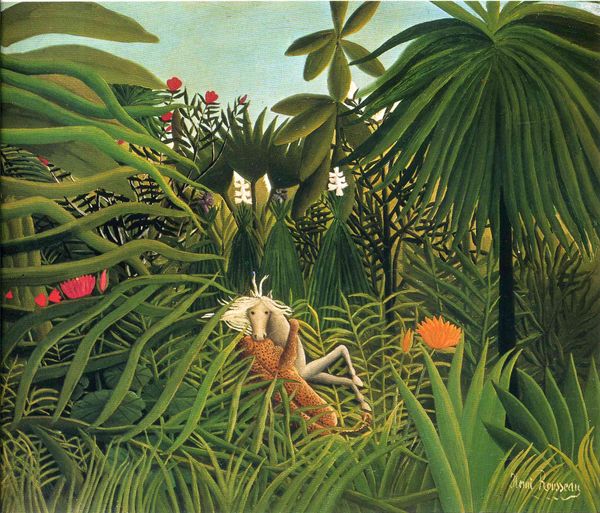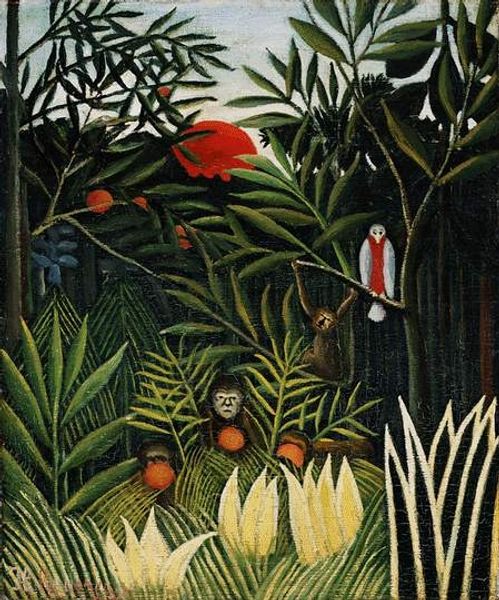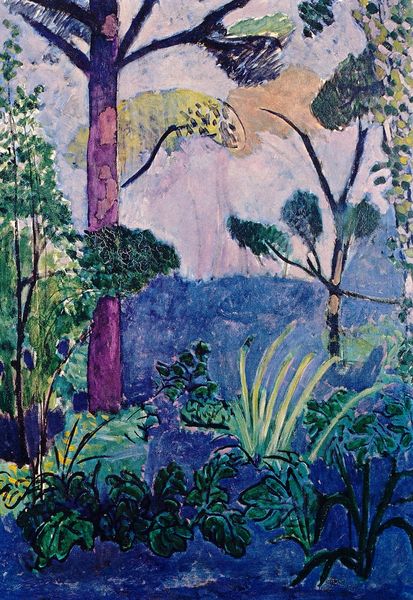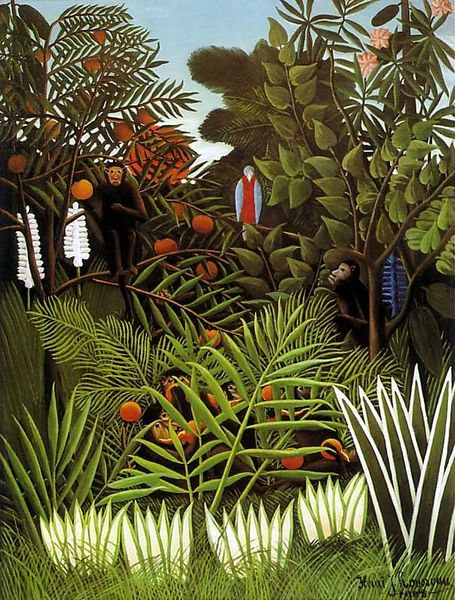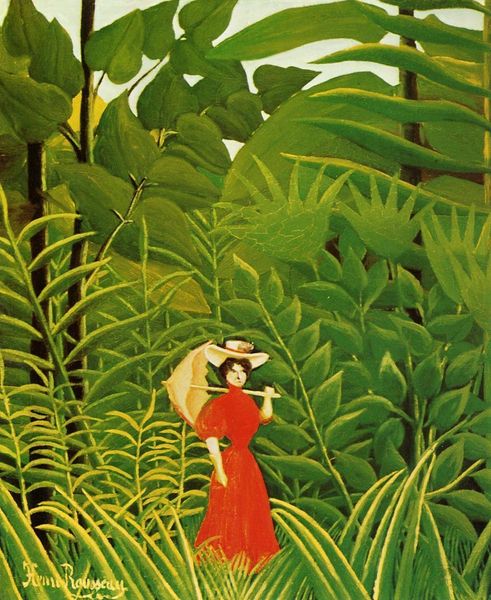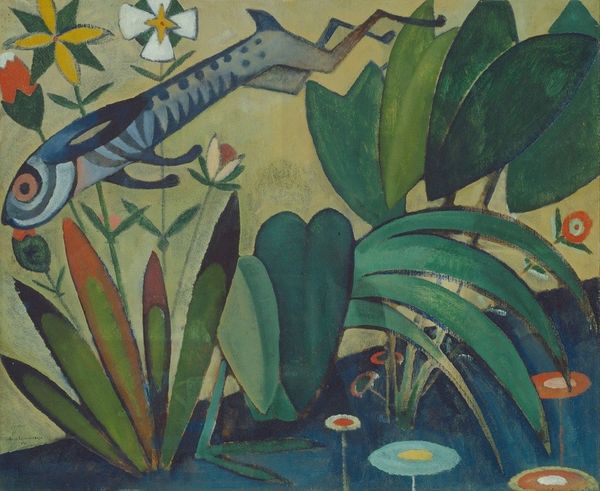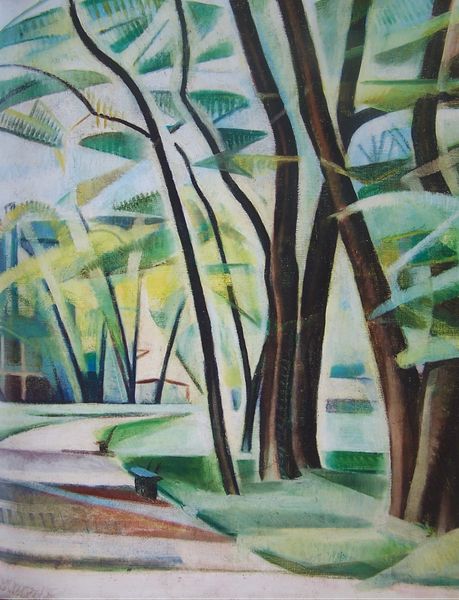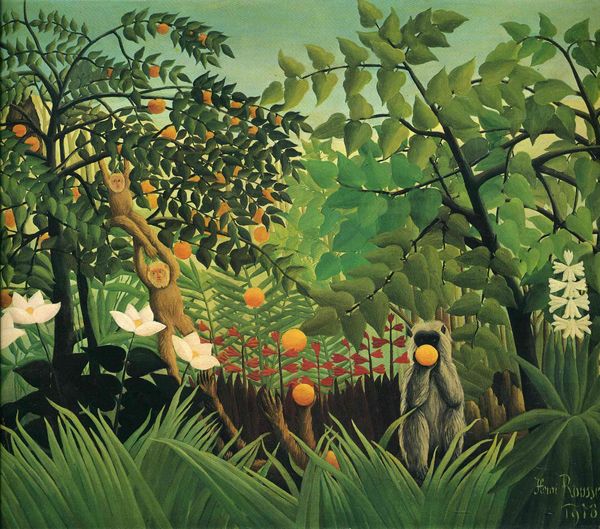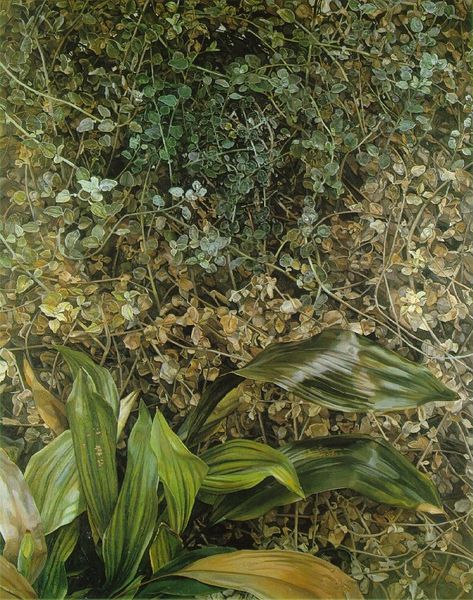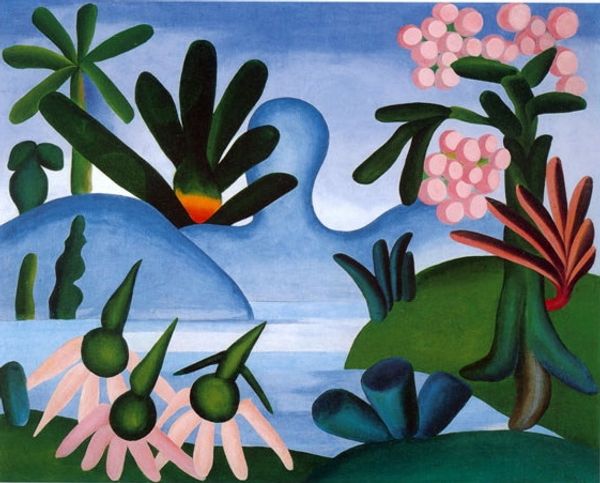
Copyright: Public domain
Curator: Let's turn our attention to Henri Rousseau's "The Equatorial Jungle," painted in 1909. It's a vibrant, almost theatrical depiction of a jungle scene. Editor: It strikes me as intensely green and layered. A visual feast of textures, but something feels slightly…off. Like a stage set more than a living, breathing place. Curator: That "off-ness" is quintessential Rousseau. He famously never left France, and based his jungle scenes on books, botanical gardens, and even the Jardin des Plantes. He crafted this idealised vision of the tropics based on these second-hand encounters, reflecting an outsider’s fantasy. The painting shows the power dynamic between the West and these colonized locations as being a constructed, consumable object. Editor: I’m fascinated by the tangible nature of those precisely rendered leaves. Each is distinct, almost like meticulously crafted individual elements, rather than being painted to invoke the feel of the jungle; it’s the detail, that laboriousness that holds my eye. Look closely and notice his method – the way the paint sits on the canvas, his delicate and considered manipulation. This reminds me that this painting is an assembly of carefully constructed visual components to resemble nature, using nature, not imitating nature. Curator: And within that crafted-ness, there’s also a political element. Consider the exoticized depictions of "primitive" worlds and the broader European obsession with faraway lands during this time. Rousseau's jungle acts as a window onto those attitudes. The very construction of that jungle reflects specific beliefs about nature, the colonies, and western superiority. Editor: Precisely! The act of meticulously copying plants from a botanical garden and compiling a simulacra allows control over them and becomes almost a collection, a display of material wealth. By showing us, it puts those items, these colonies, into perspective. These plants have labor attached to them in a variety of forms - colonial exploration, travel, and extraction to put on display in an effort to define them for his viewer. Curator: So it's not just an innocent depiction of nature, but a window into a world shaped by imperialism, scientific observation, and romantic ideals. Editor: And all that embedded into layers of meticulously rendered oil paint! To understand the world view we have to consider how these exotic materials travel across colonial lines. Curator: Well, looking closer at it allows for an interesting reflection of both art history and socio-political concerns. Editor: Definitely. Rousseau’s meticulousness rewards our focused attention, inviting us to really see, and consider the many layers embedded in this exotic landscape.
Comments
No comments
Be the first to comment and join the conversation on the ultimate creative platform.
